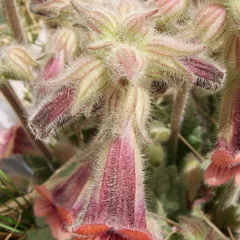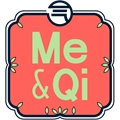Blood and Qi Deficiency with Blood Stagnation
The information provided here is not a replacement for a doctor. You shouldn't use it for the purpose of self-diagnosing or self-medicating but rather so you can have a more informed discussion with a professional TCM practitioner.
At a glance
Preliminary reading: What is a pattern?
Diagnosis
Common symptoms: Poor appetite Weak extremities Abdominal distension Irregular menstruation Red and white vaginal discharge and one other symptoms
Pulse type(s): Weak (Ruo)
Tongue color: Pale
Treatment
Common formulas: Ba Zhen Yi Mu Tang
Pathology
Blood and Qi Deficiency with Blood Stagnation is a pattern of disharmony in Chinese Medicine.
Chinese Medicine views the human body as a complex system that tends toward harmony. A pattern of disharmony is a disorder that prevents that harmony from occurring.
Patterns give rise to symptoms that may at first glance seem unrelated from a Western standpoint but that actually make a lot of sense when one understands Chinese Medicine theory. For instance here Blood and Qi Deficiency with Blood Stagnation gives rise to such diverse symptoms as poor appetite, weak extremities, soreness and weakness in the lower back and abdominal distension (as well as two others).
To diagnose a pattern, analyzing a patient's pulse as well as their tongue is common practice. In the case of Blood and Qi Deficiency with Blood Stagnation patients tend to exhibit weak (Ruo) pulses as well as a pale tongue.
Patterns aren't exactly the Chinese Medicine equivalent to Western diseases, they're rather the underlying causes behind diseases or health conditions. Here Blood and Qi Deficiency with Blood Stagnation is thought to sometimes induce conditions such as infertility.
Diagnosing Blood and Qi Deficiency with Blood Stagnation
Diagnosing a pattern in Chinese Medicine is no easy feat and should be left to professional practitioners. In particular one has to know how to differentiate between different types of pulses and tongue coatings, shapes and colors as well as learn to read from a long list of seemingly unrelated symptoms.
Pulse type(s): Weak (Ruo)
Tongue color: Pale
Main symptoms: Poor appetite Weak extremities Abdominal distension Irregular menstruation Red and white vaginal discharge Soreness and weakness in the lower back
Treating Blood and Qi Deficiency with Blood Stagnation
Herbal formulas used to treat Blood and Qi Deficiency with Blood Stagnation



The top herbs in Ba Zhen Yi Mu Tang are Motherwort Herbs (Yi Mu Cao), Prepared Rehmannia (Shu Di huang) and Ginseng (Ren Shen)
Ba Zhen Yi Mu Tang
Source date: 1624 AD
Number of ingredients: 9 herbs
Key actions: Tonifies Qi and Blood. Invigorates the Blood.
Formula summary
Ba Zhen Yi Mu Tang is a 9-ingredient Chinese Medicine formula. Invented in 1624 AD, it belongs to the category of formulas that tonify.
Besides Blood and Qi Deficiency with Blood Stagnation, Ba Zhen Yi Mu Tang is also used to treat Qi and Blood Deficiency.
